Description
***THIS IS NOT THE ACTUAL BOOK. YOU ARE BUYING the Test Bank in e-version of the following book***
Title: Test Bank for Economics Private and Public Choice 15th Edition James D Gwartney Download
Edition: 15th Edition
ISBN-10: 1285453530
ISBN-13: 978-1285453538
– The test bank is what most professors use an a reference when making exams for their students, which means there’s a very high chance that you will see a very similar, if not exact the exact, question in the test!
– The file is either in pdf, doc, rtf or zipped in the package and can easily be read on PCs and Macs.
– Delivery is INSTANT. You can download the files IMMEDIATELY once payment is done.
We also faced similar difficulities when we were students, and we understand how you feel.
But now, with the Test Bank for Economics Private and Public Choice 15th Edition James D Gwartney Download, you will be able to
* Anticipate the type of the questions that will appear in your exam.
* Reduces the hassle and stress of your student life.
* Improve your studying and also get a better grade!
* Get prepared for examination questions.
* Can save you time and help you understand the material.
This is the quality of service we are providing and we hope to be your helper.
Delivery is in the next moment. Test Bank is accurate.
If you have any questions, or would like a receive a sample chapter before your purchase, please contact us at inquiry@testbankcorp.com
Macroeconomics Chapter 1—The Economic Approach
MULTIPLE CHOICE
1. What do economists mean when they state that a good is scarce?
a. There is a shortage or insufficient supply of the good at the existing price.
b. It is impossible to expand the availability of the good beyond the current amount.
c. People will want to buy more of the good regardless of the price of the good.
d. The amount of the good that people would like exceeds the supply freely available from nature.
ANS: D PTS: 1 DIF: Moderate NAT: BUSPROG: Analytic
STA: DISC: Scarcity, tradeoffs, and opportunity cost TOP: What is Economics About?
KEY: Bloom’s: Comprehension MSC: Suggested Quiz
2. Economic choice and competitive behavior are the result of
a. basic human greed.
b. poverty.
c. private ownership of resources.
d. scarcity.
ANS: D PTS: 1 DIF: Moderate NAT: BUSPROG: Analytic
STA: DISC: Scarcity, tradeoffs, and opportunity cost TOP: What is Economics About?
KEY: Bloom’s: Comprehension MSC: Suggested Quiz
3. Joe and Ed go to a diner that sells hamburgers for $5 and hot dogs for $3. They agree to split the lunch bill evenly. Ed chooses a hot dog. The marginal cost to Joe then of ordering a hamburger instead of a hot dog is
a. $1.
b. $2.
c. $2.50.
d. $3.
ANS: A PTS: 1 DIF: Moderate NAT: BUSPROG: Analytic
STA: DISC: Marginal costs & benefits TOP: The Economic Way of Thinking
KEY: Bloom’s: Application MSC: Suggested Quiz
4. The expression, “There’s no such thing as a free lunch,” implies that
a. everyone has to pay for his own lunch.
b. the person consuming a good must always pay for it.
c. opportunity costs are incurred when resources are used to produce goods and services.
d. no one has time for a good lunch anymore.
ANS: C PTS: 1 DIF: Moderate NAT: BUSPROG: Analytic
STA: DISC: Scarcity, tradeoffs, and opportunity cost
TOP: The Economic Way of Thinking KEY: Bloom’s: Comprehension
MSC: Suggested Quiz
5. Which one of the following states a central element of the economic way of thinking?
a. Scarce goods are priceless.
b. Incentives matter–human choice is influenced in predictable ways by changes in personal costs and benefits.
c. The realism of the assumptions is the best test of an economic theory.
d. When deciding how to allocate time, the concept of opportunity cost is meaningless.
ANS: B PTS: 1 DIF: Moderate NAT: BUSPROG: Analytic
STA: DISC: The role of incentives TOP: The Economic Way of Thinking
KEY: Bloom’s: Comprehension MSC: Suggested Quiz
6. Which of the following is most clearly consistent with the basic postulate of economics regarding the reaction of people to a change in incentives.
a. Farmers produce fewer bushels of wheat in response to an increase in the price of wheat.
b. People will buy more milk at a price of $2 per gallon than at $1 per gallon.
c. People will buy less gas if the price of gas increases by $.20 per gallon.
d. People will consume more beef if the price increases from $1 to $2 per pound.
ANS: C PTS: 1 DIF: Moderate NAT: BUSPROG: Analytic
STA: DISC: The role of incentives TOP: The Economic Way of Thinking
KEY: Bloom’s: Application MSC: Suggested Quiz
7. Which one of the following is a positive economic statement?
a. An increase in the minimum wage will reduce employment.
b. The minimum wage should be increased.
c. Social justice will be served by increasing the minimum wage.
d. Thoughtful people oppose an increase in the minimum wage.
ANS: A PTS: 1 DIF: Moderate NAT: BUSPROG: Analytic
STA: DISC: Scarcity, tradeoffs, and opportunity cost
TOP: Positive and Normative Economics KEY: Bloom’s: Comprehension
MSC: Suggested Quiz
8. The basic difference between macroeconomics and microeconomics is that
a. macroeconomics is concerned with the forest (aggregate markets), while microeconomics is concerned with the individual trees (subcomponents).
b. macroeconomics is concerned with policy decisions, while microeconomics applies only to theory.
c. microeconomics is concerned with the forest (aggregate markets), while macroeconomics is concerned with the trees (subcomponents).
d. opportunity cost is applicable to macroeconomics, and the fallacy of composition relates to microeconomics.
ANS: A PTS: 1 DIF: Moderate NAT: BUSPROG: Analytic
STA: DISC: Scarcity, tradeoffs, and opportunity cost
TOP: Pitfalls to Avoid in Economic Thinking KEY: Bloom’s: Comprehension
MSC: Suggested Quiz
9. Economic analysis assumes that
a. individuals act only out of selfish motives.
b. although individuals are at times selfish and at times unselfish, only their selfish actions may be predicted.
c. people are basically humanitarian, and their actions are, therefore, impossible to predict.
d. changes in the personal benefits and costs associated with a choice will exert a predictable influence on human behavior.
ANS: D PTS: 1 DIF: Moderate NAT: BUSPROG: Analytic
STA: DISC: Utility and consumer choice TOP: What is Economics About?
KEY: Bloom’s: Comprehension MSC: Suggested Quiz
10. While waiting in line to buy two tacos at 75 cents each, and a medium drink for 80 cents, Jordan notices that the restaurant has a value meal containing three tacos and a medium drink all for $2.50. For Jordan, the marginal cost of purchasing the third taco would be
a. zero.
b. 20 cents.
c. 75 cents.
d. 80 cents.
ANS: B PTS: 1 DIF: Moderate NAT: BUSPROG: Analytic
STA: DISC: Marginal costs & benefits TOP: The Economic Way of Thinking
KEY: Bloom’s: Application MSC: Suggested Quiz
11. Adam Smith believed that if people were free to pursue their own interests,
a. public interest would be served quite well.
b. less would be produced than if altruism were the guiding principle.
c. they would generally apply their talents to unproductive activities that would generate little value to society.
d. they would have little incentive to undertake productive activities.
ANS: A PTS: 1 DIF: Easy NAT: BUSPROG: Analytic
STA: DISC: Scarcity, tradeoffs, and opportunity cost
TOP: Outstanding Economist: The Importance of Adam Smith, the Father of Economic Science
KEY: Bloom’s: Knowledge
12. Modern economics as a field of study is usually thought to have begun with
a. Adam Smith and the writing of The Wealth of Nations.
b. David Ricardo and the writing of The Principles of Political Economy and Taxation.
c. Aristotle and the writing of Politics and Ethics.
d. Moses and the Ten Commandments.
ANS: A PTS: 1 DIF: Easy NAT: BUSPROG: Analytic
STA: DISC: Scarcity, tradeoffs, and opportunity cost
TOP: Outstanding Economist: The Importance of Adam Smith, the Father of Economic Science
KEY: Bloom’s: Knowledge
13. According to Adam Smith, individual self-interest
a. is a powerful force for economic progress when it is directed by competitive markets.
b. is a powerful force for economic progress when individuals are wisely directed by a strong central government.
c. is a major factor in retarding the economic progress of humankind.
d. could be either a positive or negative force for economic progress, depending on the moral influences of political leaders.
ANS: A PTS: 1 DIF: Easy NAT: BUSPROG: Analytic
STA: DISC: Scarcity, tradeoffs, and opportunity cost
TOP: Outstanding Economist: The Importance of Adam Smith, the Father of Economic Science
KEY: Bloom’s: Knowledge
14. The basic ingredients in any economic decision are
a. scarcity and choice.
b. surpluses and shortages.
c. market prices and the use of efficient production methods.
d. needs and wants.
ANS: A PTS: 1 DIF: Moderate NAT: BUSPROG: Analytic
STA: DISC: Scarcity, tradeoffs, and opportunity cost TOP: What is Economics About?
KEY: Bloom’s: Knowledge
15. Economic choice and competitive behavior are the result of
a. scarcity.
b. poverty.
c. public ownership of resources.
d. private ownership of resources.
ANS: A PTS: 1 DIF: Moderate NAT: BUSPROG: Analytic
STA: DISC: Scarcity, tradeoffs, and opportunity cost TOP: What is Economics About?
KEY: Bloom’s: Knowledge
16. For the typical student, taking an introductory course in economics should
a. turn the student into an economist.
b. teach the student solutions to most social problems.
c. teach the student how to answer complex social questions.
d. help the student learn to rationally analyze social problems.
e. All of the above are correct.
ANS: D PTS: 1 DIF: Moderate NAT: BUSPROG: Analytic
STA: DISC: Scarcity, tradeoffs, and opportunity cost TOP: What is Economics About?
KEY: Bloom’s: Comprehension
17. When a society cannot produce all the goods and services people wish to have, it is said that the economy is experiencing
a. scarcity.
b. shortages.
c. inefficiencies.
d. inequities.
ANS: A PTS: 1 DIF: Easy NAT: BUSPROG: Analytic
STA: DISC: Scarcity, tradeoffs, and opportunity cost TOP: What is Economics About?
KEY: Bloom’s: Knowledge
18. By scientific method we mean
a. the use of modern electronic testing equipment to understand the world.
b. the dispassionate development and testing of theories about how the world works.
c. the use of controlled laboratory experiments to understand the way the world works.
d. finding evidence to support preconceived theories about how the world works.
ANS: B PTS: 1 DIF: Moderate NAT: BUSPROG: Analytic
STA: DISC: Scarcity, tradeoffs, and opportunity cost
TOP: The Economic Way of Thinking KEY: Bloom’s: Comprehension
19. Economists make assumptions in order to
a. mimic the methodologies employed by other scientists.
b. minimize the number of experiments that yield no useful data.
c. minimize the likelihood that some aspect of the problem at hand is being overlooked.
d. focus their thinking on the essence of the problem at hand.
ANS: D PTS: 1 DIF: Moderate NAT: BUSPROG: Analytic
STA: DISC: Scarcity, tradeoffs, and opportunity cost
TOP: The Economic Way of Thinking KEY: Bloom’s: Comprehension
20. Which of the following is the best definition of economics?
a. An investigation of the quantities and prices of the various goods produced by the nations of the world.
b. A study of why inflation and unemployment periodically plague the U.S. economy.
c. An analysis of how individuals and societies deal with the problem of scarcity.
d. An examination of the role that money plays in the economy.
e. A study of how goods and services are distributed throughout the world.
ANS: C PTS: 1 DIF: Easy NAT: BUSPROG: Analytic
STA: DISC: Scarcity, tradeoffs, and opportunity cost TOP: What is Economics About?
KEY: Bloom’s: Knowledge
21. Economics is primarily the study of
a. why people like to make money.
b. the management of a business.
c. the choices people make as the result of scarcity.
d. how to make money in the stock market.
ANS: C PTS: 1 DIF: Easy NAT: BUSPROG: Analytic
STA: DISC: Scarcity, tradeoffs, and opportunity cost TOP: What is Economics About?
KEY: Bloom’s: Knowledge
22. Economics is primarily the study of
a. how individuals make choices because of scarcity.
b. how to succeed in business.
c. how to make money in the stock market.
d. how the values and preferences of people are formed.
ANS: A PTS: 1 DIF: Easy NAT: BUSPROG: Analytic
STA: DISC: Scarcity, tradeoffs, and opportunity cost TOP: What is Economics About?
KEY: Bloom’s: Knowledge
23. Economics is primarily the study of
a. how to make money in the stock market.
b. how to operate a business successfully.
c. the allocation of scarce resources in an effort to satisfy wants that are virtually unlimited.
d. the methods business firms use to reduce their costs of production.
ANS: C PTS: 1 DIF: Easy NAT: BUSPROG: Analytic
STA: DISC: Scarcity, tradeoffs, and opportunity cost TOP: What is Economics About?
KEY: Bloom’s: Knowledge
24. Some individuals or families can become completely saturated with a service such as television. This suggests that
a. wants are limited
b. desires for a single commodity can be satisfied but then the focus will switch to other goods and services
c. a highly productive economy may someday be able to satisfy all human desires
d. resources are not truly fixed in supply as we generally assume
e. scarcity does not exist
ANS: B PTS: 1 DIF: Moderate NAT: BUSPROG: Analytic
STA: DISC: Scarcity, tradeoffs, and opportunity cost TOP: What is Economics About?
KEY: Bloom’s: Comprehension
25. In economics, the term “scarcity” refers to the fact that
a. everything really worthwhile costs money.
b. even in wealthy countries like the United States, some people are poor.
c. no society can produce enough to satisfy fully the desires of people for goods and services.
d. sometimes shortages of a good arise when its price is set below the market equilibrium.
ANS: C PTS: 1 DIF: Easy NAT: BUSPROG: Analytic
STA: DISC: Scarcity, tradeoffs, and opportunity cost TOP: What is Economics About?
KEY: Bloom’s: Knowledge
26. When economists say a good is scarce, they mean
a. there are only a limited number of consumers who would be interested in purchasing the good.
b. the human desire for the good exceeds the amount freely available from nature.
c. most people in poorer countries do not have enough of the good.
d. the production of the good has no opportunity cost for society.
ANS: B PTS: 1 DIF: Easy NAT: BUSPROG: Analytic
STA: DISC: Scarcity, tradeoffs, and opportunity cost TOP: What is Economics About?
KEY: Bloom’s: Knowledge
27. When economists say goods are scarce, they mean
a. consumers are too poor to afford the goods and services available.
b. consumers are unwilling to buy goods unless they have very low prices.
c. goods are generally freely available from nature in most countries.
d. the desire for goods and services exceeds our ability to produce them with the limited resources available.
ANS: D PTS: 1 DIF: Easy NAT: BUSPROG: Analytic
STA: DISC: Scarcity, tradeoffs, and opportunity cost TOP: What is Economics About?
KEY: Bloom’s: Knowledge
28. Scarcity implies that
a. consumers are too poor to afford the goods and services available.
b. consumers are willing to purchase more of a good at the current price than suppliers are willing to produce.
c. it is impossible to completely fulfill the desire for goods and services with the limited resources available.
d. consumers would be willing to buy the same quantity of a good at a higher price.
ANS: C PTS: 1 DIF: Easy NAT: BUSPROG: Analytic
STA: DISC: Scarcity, tradeoffs, and opportunity cost TOP: What is Economics About?
KEY: Bloom’s: Knowledge
29. If scarcity were eliminated,
a. all goods would be free.
b. no one would have to make any choices.
c. everyone could have all they want at no cost.
d. all of the above are true.
ANS: D PTS: 1 DIF: Easy NAT: BUSPROG: Analytic
STA: DISC: Scarcity, tradeoffs, and opportunity cost TOP: What is Economics About?
KEY: Bloom’s: Knowledge
30. If a good is scarce,
a. there will be shortages of it if the good is rationed by markets.
b. the good will have a price in a market setting.
c. there will be enough of the good freely available from nature to satisfy the human desire for it.
d. all of the above are true.
ANS: B PTS: 1 DIF: Moderate NAT: BUSPROG: Analytic
STA: DISC: Scarcity, tradeoffs, and opportunity cost TOP: What is Economics About?
KEY: Bloom’s: Knowledge
31. When a good is scarce,
a. this indicates that producers are withholding output so they can raise the price of the good.
b. some method must be used to allocate the good among users.
c. price is one way to ration the good.
d. both b and c are correct.
e. all of the above are correct.
ANS: D PTS: 1 DIF: Moderate NAT: BUSPROG: Analytic
STA: DISC: Scarcity, tradeoffs, and opportunity cost TOP: What is Economics About?
KEY: Bloom’s: Comprehension
32. Criteria for rationing goods and resources must be established because of
a. the law of comparative advantage.
b. the use of capitalism as a form of economic organization.
c. the inability of politicians to develop efficient forms of economic organization.
d. scarcity imposed by nature.
ANS: D PTS: 1 DIF: Easy NAT: BUSPROG: Analytic
STA: DISC: Scarcity, tradeoffs, and opportunity cost TOP: What is Economics About?
KEY: Bloom’s: Knowledge
33. Every economy must ration goods in some way because of
a. overpopulation.
b. poorly-performing markets.
c. the income gap between rich and poor.
d. scarcity.
ANS: D PTS: 1 DIF: Easy NAT: BUSPROG: Analytic
STA: DISC: Scarcity, tradeoffs, and opportunity cost TOP: What is Economics About?
KEY: Bloom’s: Knowledge
34. Criteria for rationing goods and resources must be established because of
a. scarcity.
b. the use of capitalism as the method of economic organization.
c. the inability of politicians to develop efficient forms of economic organization.
d. shortages resulting from government inefficiency.
ANS: A PTS: 1 DIF: Easy NAT: BUSPROG: Analytic
STA: DISC: Scarcity, tradeoffs, and opportunity cost TOP: What is Economics About?
KEY: Bloom’s: Knowledge
35. Which of the following is true of resources?
a. Resources are inputs used to produce goods and services.
b. Human resources reflect the skills and productive knowledge of human beings.
c. With the passage of time, investment activities can increase the availability of resources.
d. All of the above are true.
ANS: D PTS: 1 DIF: Easy NAT: BUSPROG: Analytic
STA: DISC: Scarcity, tradeoffs, and opportunity cost TOP: What is Economics About?
KEY: Bloom’s: Knowledge
36. Ex-London School of Economics student Mick Jagger sang, “You can’t always get what you want, but if you try sometime, you just might find you can get what you need.” Another statement of the basic economic principle expressed in this lyric is that
a. rational decisions are not always possible.
b. you can allocate your resources to what gives you the highest value.
c. you can create the supply to meet your own demand.
d. you can maximize social welfare by making optimal decisions.
ANS: B PTS: 1 DIF: Moderate NAT: BUSPROG: Analytic
STA: DISC: Scarcity, tradeoffs, and opportunity cost TOP: What is Economics About?
KEY: Bloom’s: Application
37. Capital is a term economists use to refer to
a. man-made resources used to produce other goods and services.
b. resources that are available in nature such as mineral deposits.
c. money that is used to consume goods and services, to distinguish it from money that is saved.
d. the value of the best alternative to an action.
ANS: A PTS: 1 DIF: Easy NAT: BUSPROG: Analytic
STA: DISC: Scarcity, tradeoffs, and opportunity cost TOP: What is Economics About?
KEY: Bloom’s: Knowledge
38. The three major categories of resources are
a. human resources, physical resources, and natural resources.
b. scarce resources, capital resources, and abundant resources.
c. financial resources, global resources, and local resources.
d. common resources, private resources, and capital resources.
ANS: A PTS: 1 DIF: Easy NAT: BUSPROG: Analytic
STA: DISC: Scarcity, tradeoffs, and opportunity cost TOP: What is Economics About?
KEY: Bloom’s: Knowledge
39. In economics, man-made resources such as tools, equipment, and structures that are used to produce other goods and services are referred to as
a. consumer goods.
b. capital.
c. marginal goods.
d. infrastructures.
ANS: B PTS: 1 DIF: Easy NAT: BUSPROG: Analytic
STA: DISC: Scarcity, tradeoffs, and opportunity cost TOP: What is Economics About?
KEY: Bloom’s: Knowledge
40. Which of the following best describes the difference between an objective concept and a subjective concept?
a. A subjective concept is a fact based on observation that is not subject to personal opinion, while an objective concept is based on personal preferences and value judgments.
b. An objective concept is a fact based on observation that is not subject to personal opinion, while a subjective concept is based on personal preferences and value judgments.
c. A subjective concept relates to issues in microeconomics, while an objective concept relates to issues in macroeconomics.
d. An objective concept can only be illustrated in words, while a subjective concept can usually be illustrated with a graph.
ANS: B PTS: 1 DIF: Easy NAT: BUSPROG: Analytic
STA: DISC: Scarcity, tradeoffs, and opportunity cost TOP: What is Economics About?
KEY: Bloom’s: Knowledge
41. A fact based on observable phenomenon that is not influenced by differences in personal opinion is called
a. an objective concept.
b. a subjective concept.
c. an unintended consequence.
d. ceteris paribus.
ANS: A PTS: 1 DIF: Easy NAT: BUSPROG: Analytic
STA: DISC: Scarcity, tradeoffs, and opportunity cost TOP: What is Economics About?
KEY: Bloom’s: Knowledge
42. An opinion based on personal preferences and value judgments is called
a. an objective concept.
b. a subjective concept.
c. an unintended consequence.
d. ceteris paribus.
ANS: B PTS: 1 DIF: Easy NAT: BUSPROG: Analytic
STA: DISC: Scarcity, tradeoffs, and opportunity cost TOP: What is Economics About?
KEY: Bloom’s: Knowledge
43. If people willingly give up something (such as money) for a good, then the good is
a. not an economic good.
b. scarce.
c. available in an unlimited supply.
d. a luxury good.
ANS: B PTS: 1 DIF: Moderate NAT: BUSPROG: Analytic
STA: DISC: Scarcity, tradeoffs, and opportunity cost TOP: What is Economics About?
KEY: Bloom’s: Comprehension
44. When price is the rationing criterion, individuals have a strong incentive to
a. ignore the wishes of others when making decisions about how to use their resources.
b. provide services to others in exchange for income.
c. avoid exchanges because in every exchange there will be one person who gains and another who loses.
d. substitute promises for the consistent delivery of a quality product.
ANS: B PTS: 1 DIF: Moderate NAT: BUSPROG: Analytic
STA: DISC: The role of incentives TOP: What is Economics About?
KEY: Bloom’s: Application
45. To abstract from reality in an economic model means that
a. we include only a few of the essential aspects of reality.
b. the economic study surveys only a very limited period of time.
c. we include only those elements which support our hypothesis.
d. the model includes every aspect of the real world.
e. the model examines the actions of the consumers in the absence of producers and the government.
ANS: A PTS: 1 DIF: Moderate NAT: BUSPROG: Analytic
STA: DISC: Scarcity, tradeoffs, and opportunity cost
TOP: The Economic Way of Thinking KEY: Bloom’s: Comprehension
46. The economic way of thinking is
a. a set of historical generalizations that indicates what goods should be produced.
b. a body of statistical data that indicates how an economy should be organized.
c. a set of basic concepts that helps one understand human choices.
d. a set of complex, highly abstract theories that provides persons skilled in statistics with the information necessary to tell others what choices they should make.
ANS: C PTS: 1 DIF: Moderate NAT: BUSPROG: Analytic
STA: DISC: Scarcity, tradeoffs, and opportunity cost
TOP: The Economic Way of Thinking KEY: Bloom’s: Comprehension
47. Economic theory
a. is a set of definitions, postulates, and principles assembled in a manner that helps make cause-and-effect relationships clear in economics.
b. is like a guidebook in that it points out what to look for.
c. provides economists with a common language and way of thinking about how the world works.
d. is all of the above.
ANS: D PTS: 1 DIF: Moderate NAT: BUSPROG: Analytic
STA: DISC: Scarcity, tradeoffs, and opportunity cost
TOP: The Economic Way of Thinking KEY: Bloom’s: Comprehension
48. Which of the following is part of the economic way of thinking?
a. Opportunity costs will always be incurred when scarce resources are used to produce a good.
b. When the cost of an option increases, individuals will be less likely to choose it.
c. In addition to their immediate direct effects, economic actions often generate secondary effects that are observable only after the passage of time.
d. All of the above are part of the economic way of thinking.
ANS: D PTS: 1 DIF: Moderate NAT: BUSPROG: Analytic
STA: DISC: Scarcity, tradeoffs, and opportunity cost
TOP: The Economic Way of Thinking KEY: Bloom’s: Comprehension
49. Which of the following is part of the economic way of thinking?
a. The accuracy of the assumptions is the best test of an economic theory.
b. When an option becomes more expensive, people will be less likely to choose it.
c. The value of a good can be determined objectively by measuring the amount of labor required for its production.
d. All of the above.
ANS: B PTS: 1 DIF: Easy NAT: BUSPROG: Analytic
STA: DISC: Scarcity, tradeoffs, and opportunity cost
TOP: The Economic Way of Thinking KEY: Bloom’s: Knowledge
50. The expression “There’s no such thing as a free lunch” means
a. if one person gains, someone else must lose.
b. each person must pay for exactly what he or she receives.
c. the use of resources to produce a good has an opportunity cost because of scarcity.
d. you cannot have a free lunch at the expense of someone else.
ANS: C PTS: 1 DIF: Moderate NAT: BUSPROG: Analytic
STA: DISC: Scarcity, tradeoffs, and opportunity cost
TOP: The Economic Way of Thinking KEY: Bloom’s: Comprehension
51. “There is no such thing as a free lunch.” This statement best reflects the fact that
a. consumers are unwilling to pay for a good unless it provides them with value.
b. an opportunity cost is always present when scarce resources are used to produce a good.
c. it generally requires enormous effort to search out the best place to eat lunch.
d. the value of a good to consumers will decrease as they have more of it.
ANS: B PTS: 1 DIF: Moderate NAT: BUSPROG: Analytic
STA: DISC: Scarcity, tradeoffs, and opportunity cost
TOP: The Economic Way of Thinking KEY: Bloom’s: Comprehension
52. Which of the following statements is correct?
a. If the buyer of a good gains, the seller must lose an equal amount.
b. The value of goods is objective; it is equal to the cost of supplying the good.
c. Opportunity costs will always be incurred when scarce resources are used to produce a good.
d. Changes in incentives generally have no effect on human behavior.
ANS: C PTS: 1 DIF: Moderate NAT: BUSPROG: Analytic
STA: DISC: Scarcity, tradeoffs, and opportunity cost
TOP: The Economic Way of Thinking KEY: Bloom’s: Comprehension
53. Rational choice requires that opportunity cost be
a. ignored in making a decision.
b. considered for individual choices, but not for societal choices.
c. computed, but not actually used in making a decision.
d. considered as part of making a decision.
e. used as the sole decision criterion.
ANS: D PTS: 1 DIF: Easy NAT: BUSPROG: Analytic
STA: DISC: Scarcity, tradeoffs, and opportunity cost
TOP: The Economic Way of Thinking KEY: Bloom’s: Comprehension
54. During a war, governments will sometimes draft people, most of whom are presently employed, into the army. An economist, computing the real cost of the war, would be sure to include which of the following items?
a. the value of the civilian goods no longer produced by the new soldiers
b. the cost of feeding and clothing the new soldiers
c. the dollar cost of the payroll
d. the higher prices of civilian goods due to wartime shortages
e. the cost of transporting the soldiers to combat
ANS: A PTS: 1 DIF: Moderate NAT: BUSPROG: Analytic
STA: DISC: Scarcity, tradeoffs, and opportunity cost
TOP: The Economic Way of Thinking KEY: Bloom’s: Analysis

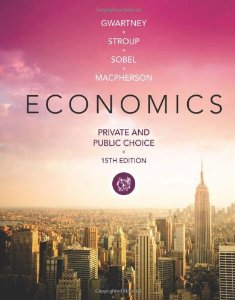
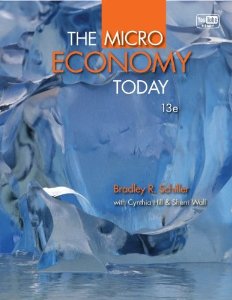
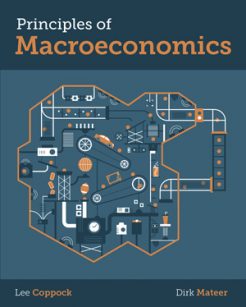
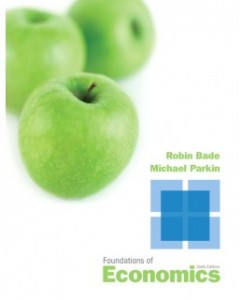
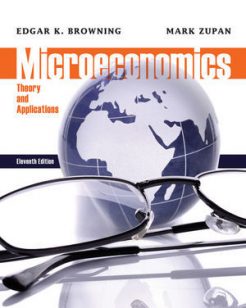

Reviews
There are no reviews yet.